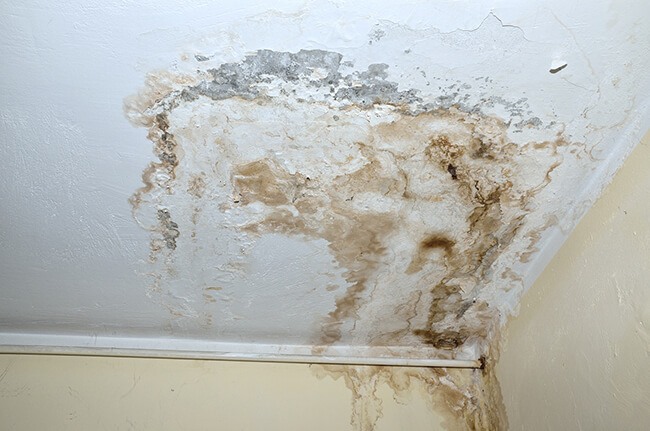Top 6 Causes of Mold in Your Home

As unpleasant as it may be, mold is a fact of life in nearly every indoor environment. However, indoor mold growth can be controlled.
Mold needs these conditions before it can begin to grow in a home:
- Mold spores
- A food source (wood, drywall, cotton)
- Darkness (mold can’t grow under ultraviolet light)
- Warmth (mold can’t grow in freezing temperatures)
- Oxygen
- Moisture (water leaks, humidity)
- Enough time (most molds can begin to grow in 24-48 hours if the conditions are right)
The key to controlling the mold in your home is to determine what exactly is causing it.
Poor Ventilation and Humidity
If your home is poorly ventilated you are at risk of mold. The lack of ventilation can create pockets of stagnant, moist air that mold thrives in. Evaporating water and steam create humidity. The humidity needs to be circulated outdoors to maintain a balanced moisture level.
Leaking Pipes
The most common cause of mold growth is water leaking from pipes. The worst leaks are the ones that are out of plain sight, like inside a wall or above a ceiling. Hidden leaks are particularly bad because by the time you find them mold has usually already started to grow.
Leaks in Roof
Like some leaking pipes, a roof that leaks into the attic might not be discovered until it has already led to mold growth. The best thing to do is to check the attic regularly for leaks. Also, keep an eye on the ceiling below the attic for tale-tell water spots.
Flooding
Mold problems are nearly unavoidable after your home has been affected by flooding. Obviously, your house will be very wet for a long time during a flood. It could take days or even weeks to dry out. This means there is a huge risk of mold growth. Mold only needs an area to be wet for 24 hours before it can grow.
Damp Basements
Basements are usually not well ventilated. This means they often contain higher amounts of moisture or humidity than other rooms in the house. Basements are also often colder meaning more condensation occurs which leads to dampness and humidity.
Water at the Foundation
Watch for water building up around the base of your house. This can lead to water problems for the foundation of your home. Rainwater gathering at the foundation can be prevented by sloping the yard away from the foundation.
More Mold Prevention Tips
- Keep humidity levels low. They should no higher than 50%. An air conditioner or dehumidifier will help achieve this. Remember that humidity levels change throughout the day. You will need to check the humidity levels often
- Be sure your home has enough ventilation. Use exhaust fans that vent outside your home in the kitchen and bathroom. Clothes dryer vents should also be outside.
- Fix any leaks in your home’s roof, walls, or plumbing. Then mold will not have the moisture it needs to grow.
- Dry out your home completely within 24–48 hours after flooding.
- Wash walls before painting, and consider adding mold inhibitor to the paint.
- Use mold-killing products to clean bathrooms.
- Remove or replace carpets and upholstery that are wet and cannot be dried out right away. Consider not using carpet in rooms that have a lot of moisture, like bathrooms or basements.
By following a simple checklist you can try to stop the growth of mold in your home. However, if you do spot mold on your routine inspections, contact Mold and Air Quality for a free professional quote for mold remediation today.
